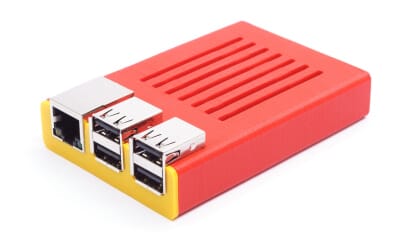Brief Introduction and History
Polylactic Acid (PLA) is a biodegradable thermoplastic, widely acclaimed in the 3D printing community for its environmental friendliness and ease of use. Originating from the early 20th century, PLA’s role in 3D printing has been transformative, especially appealing to those seeking sustainable alternatives to traditional plastics. Its rise in popularity within the 3D printing industry is attributed to its renewable origins and the growing environmental consciousness in manufacturing and prototyping.
Material Composition and Production
PLA is synthesized from organic sources like corn starch or sugarcane. This process involves fermenting these plant-based materials to produce lactic acid, which is then polymerized to create the PLA thermoplastic. This bioplastic stands out in the 3D printing world for its lower melting point, making it energy-efficient and easy to print with. For professionals, PLA’s composition offers a unique blend of ease and precision, allowing for high-quality prints with minimal warping, a common challenge in 3D printing.
Diverse Applications
PLA’s versatility makes it suitable for a wide range of applications. Beginners find it ideal for printing decorative items, simple tools, or parts for DIY projects due to its ease of use and excellent surface finish. In professional settings, PLA is extensively used for creating detailed prototypes, architectural models, and complex educational models. Its precision and finish quality make it a preferred choice for intricate designs that require a high level of detail.
Optimal Use Cases
For hobbyists, PLA is perfect for crafting models, toys, and household decorations, thanks to its ease of printing and vibrant colour options. In a professional context, PLA is best utilized for non-functional prototypes and models where dimensional accuracy and aesthetic detail are crucial. However, it’s less suited for parts that will undergo mechanical stress or high temperatures.
Detailed Use Examples
- Medical Models and Prosthetics:
- Researchers and medical professionals use PLA to create detailed anatomical models for surgical planning and educational purposes.
- Custom prosthetics, especially for children, are often made using PLA due to its biocompatibility and ease of printing.
- Eco-Friendly Packaging:
- PLA is used to create biodegradable packaging solutions, such as plant pots that can be planted directly into the soil.
- It’s also used for eco-friendly food packaging, replacing traditional plastics in some cases.
- Educational Tools and Models:
- In schools and universities, PLA is used to print educational models like historical artifacts, molecular structures, and geographical terrains.
- It’s also popular for creating custom tools and aids for science and engineering education.
- Custom Consumer Goods:
- PLA is widely used for printing custom phone cases, fashion accessories like jewellery, and home decor items.
- Kitchen gadgets, toys, and personalized gifts are also commonly made from PLA.
- Prototyping for Product Development:
- In professional settings, PLA is used for rapid prototyping of product designs due to its precision and ease of use.
- It’s ideal for creating functional prototypes and design models for various industries, including automotive and consumer electronics.
Evolution of PLA: Basic to Advanced Forms
Standard PLA is known for its user-friendliness, but it has limitations in strength and temperature resistance. Advanced variants like PLA+ or reinforced PLA (with additives like carbon fibers) have been developed to overcome these limitations. These advanced forms offer increased strength, flexibility, and heat resistance, making them suitable for more demanding applications, including lightweight engineering components and heat-resistant prototypes.
Advantages and Limitations
Advantages:
- Environmentally friendly and biodegradable.
- Low printing temperature, reducing energy consumption.
- Wide range of colours and finishes available.
- High resolution and dimensional accuracy for detailed prints.
Limitations:
- Lower durability and heat resistance compared to materials like ABS or PETG.
- Not suitable for outdoor use or applications requiring high structural integrity.
Overall Assessment for Daily Use
PLA is highly recommended for everyday creative projects and prototyping due to its ease of use, safety, and environmental benefits. However, for functional parts in demanding environments or applications requiring high heat resistance, alternative materials may be more appropriate.
Future Prospects in 3D Printing
The future of PLA in 3D printing is focused on enhancing its mechanical properties and heat resistance. Innovations in PLA composites and blends are expected to broaden its application scope, potentially making it suitable for more industrial and functional uses. These advancements could further cement PLA’s position as a cornerstone material in both hobbyist and professional 3D printing, aligning with the industry’s move towards more sustainable and versatile printing solutions.




